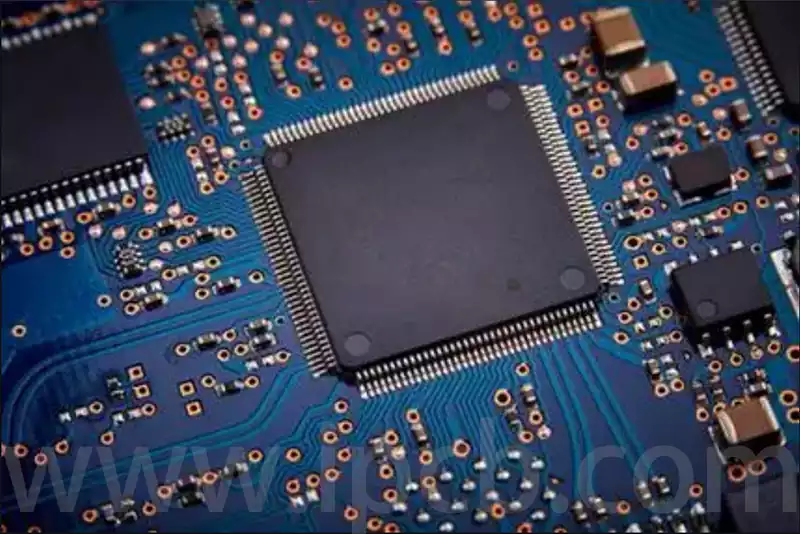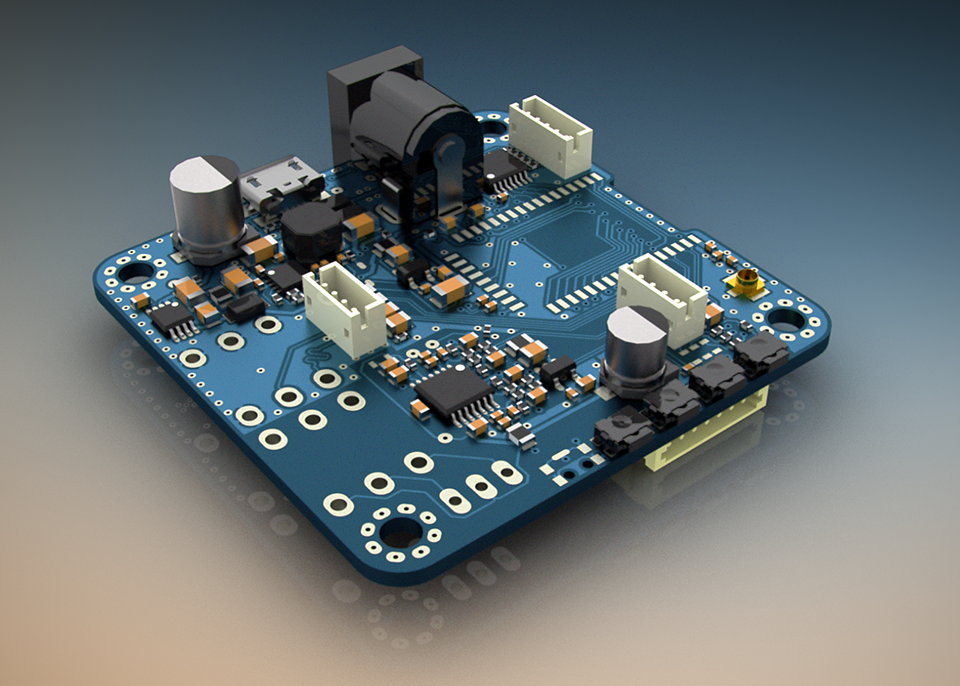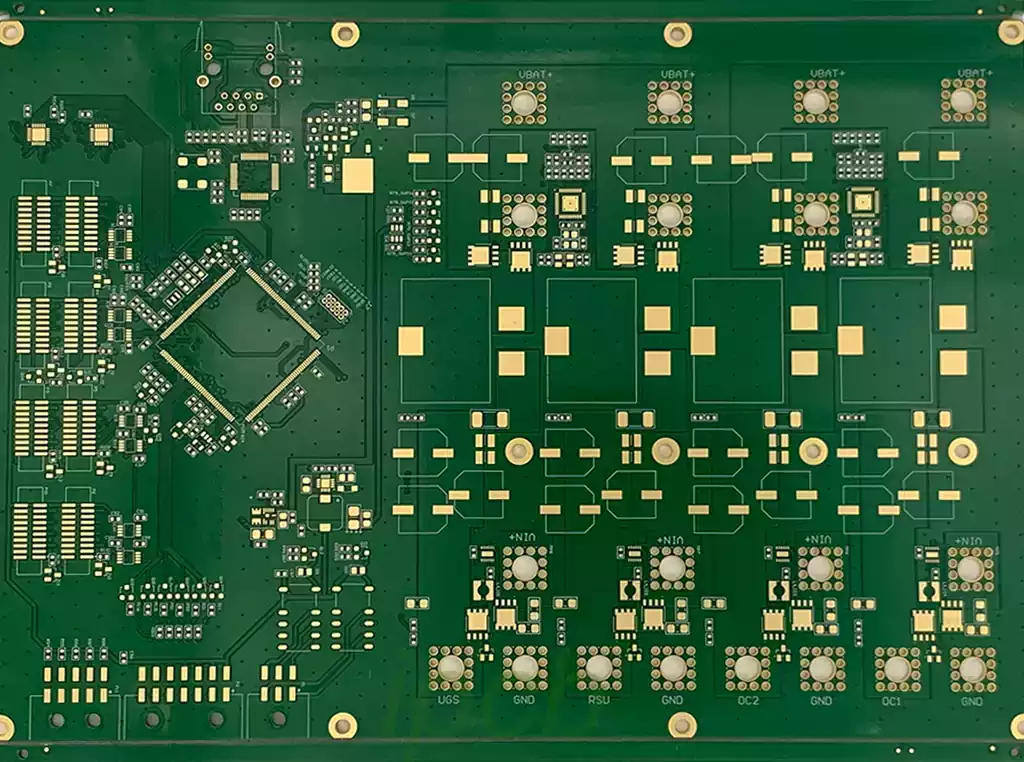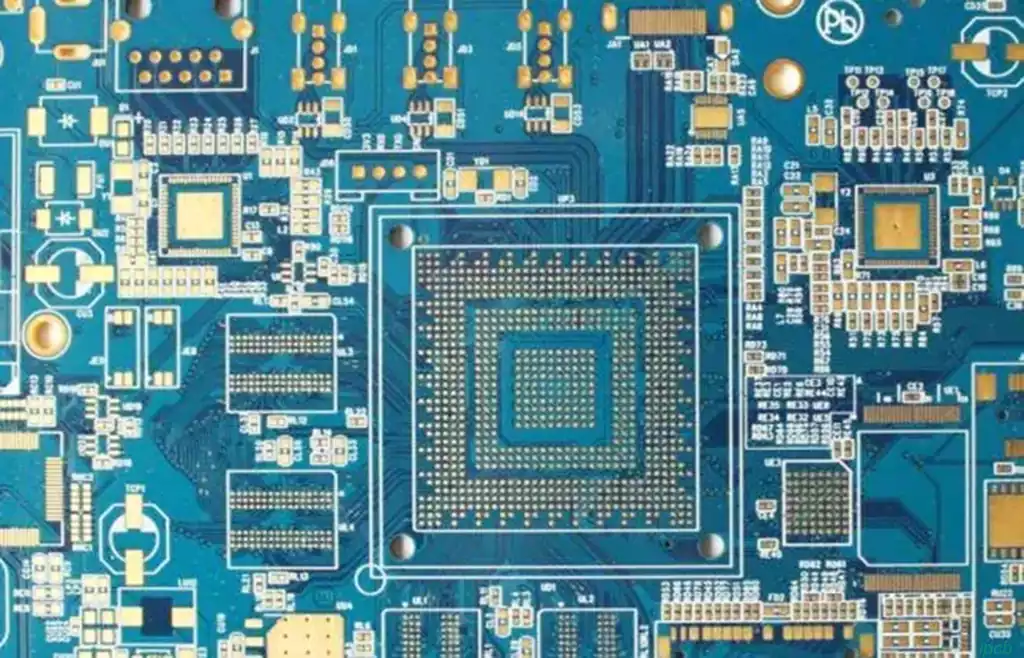PCB warping is a common quality issue in surface mount technology (SMT) processing, severely affecting the performance and reliability of electronic products. This phenomenon is not caused by a single factor but rather the combined effect of multiple factors. Gaining a deep understanding of these underlying causes is key to effectively preventing and resolving PCB warping issues.
The Five Major Causes of PCB Warping in SMT Assembly
Material Properties
Printed circuit boards (PCBs) are primarily composed of glass fibre and composite materials, and the unevenness of these constituent materials is the core cause of warping deformation. Under thermal influence, the various materials in PCB board, such as glass fibre, composite materials, and copper foil, exhibit significant differences in their coefficients of thermal expansion (CTE). These differing expansion and contraction rates between materials generate internal stress. Specifically, the significant difference in thermal expansion coefficients between copper foil and glass cloth has a substantial impact on the PCB’s shape during temperature fluctuations. For example, when electronic devices operate under frequent temperature changes, the accumulated internal stress eventually exceeds the material’s tolerance limit, leading to warping.
Temperature fluctuations
Thermal processing and temperature drift during surface mount technology (SMT) manufacturing processes are key factors contributing to PCB warping. During core processes such as reflow soldering and wave soldering, PCB boards are exposed to high-temperature environments. Under high temperatures, PCB materials expand rapidly, and contract when temperatures drop. However, due to the differing thermal expansion coefficients (CTE) between copper and the substrate material, this expansion and contraction process is uneven. For example, copper has a relatively high expansion coefficient, meaning that during heating, the expansion of copper foil is more significant than that of the surrounding substrate material. During cooling, the contraction rate of the copper foil is also relatively faster. This disparity is further exacerbated during repeated heating and cooling cycles, ultimately leading to warping deformation of the PCB after cooling.
Humidity
The impact of humidity on PCBs cannot be overlooked. If PCB boards are not properly managed during storage or handling, they may absorb excessive moisture. Once PCB materials absorb moisture, water absorption expansion occurs. During heating and cooling operations, different regions containing moisture expand and contract at different rates. For example, during the heating phase of reflow soldering, moisture rapidly vaporises, causing localised expansion to intensify. During cooling, moisture condenses, causing abnormal contraction in that region. This uneven expansion and contraction ultimately triggers warping issues, severely affecting the flatness of the PCB.
Design Issues
Unreasonable PCB design is one of the potential causes of pcb warping. For example, an imbalance in the conductive circuit patterns may result in uneven current distribution, leading to local overheating and thermal stress. Additionally, asymmetry in the circuit patterns on both sides of the PCB can result in uneven stress distribution during manufacturing and use, leading to stress concentration. When stress concentration reaches a certain threshold, the PCB will warp under stress. Under high processing temperatures or significant thermal shocks, improperly designed PCBs are more prone to warping, exacerbating the severity of the issue.
Processing Stress
During the manufacturing process of printed circuit boards (PCBs), mechanical operations such as drilling and cutting generate stress within the material. For example, during drilling, the interaction between the drill bit and the PCB material causes the material around the hole to be compressed and stretched, resulting in localised stress. Similarly, cutting operations introduce stress along the cutting edges. If these stresses generated during processing are not adequately released, they can accumulate over time under the influence of subsequent processes and environmental factors. When these residual stresses combine with thermal stresses generated during subsequent thermal cycles, the PCB board may ultimately warp.

Methods to Prevent PCB Warping in SMT Processing
- Reduce the Impact of Temperature on PCB Board Stress
Since temperature is the primary source of stress on the board, reducing the temperature of the reflow oven or slowing down the rate at which the board heats up and cools down in the reflow oven can significantly reduce the occurrence of PCB warping. However, this may also cause other side effects, such as solder shorts. - Use PCB Materials with Higher Tg Values
Tg refers to the glass transition temperature, which is the temperature at which the material transitions from a glassy state to a rubbery state. Materials with lower Tg values soften more quickly upon entering the reflow oven and remain in a soft, rubbery state for longer periods, resulting in more severe deformation. Using PCB materials with higher Tg values enhances their ability to withstand stress-induced deformation, though this comes at a higher material cost. - Increase the thickness of the circuit board
Many electronic products aim for a lighter and thinner design, with board thicknesses as low as 1.0mm, 0.8mm, or even 0.6mm. Maintaining board stability without deformation during reflow oven processing at such thin thicknesses is quite challenging. It is recommended that, unless there are specific requirements for thinness, the board thickness should be set to 1.6mm to significantly reduce the risk of PCB warping and deformation. - Reduce the size of the circuit board and the number of panels
Since most reflow ovens use chains to move the circuit boards forward, larger PCBs may sag and deform due to their own weight during reflow. Therefore, it is advisable to position the longer side of the PCB parallel to the conveyor chain to minimise deformation caused by weight. Reducing the number of panels is also based on this principle: during reflow, orient the narrow side perpendicular to the conveyor direction to achieve the lowest possible deformation. - Using a reflow oven tray fixture
If the above methods are difficult to implement, the final solution is to use a reflow oven tray (reflow carrier/template) to reduce circuit board deformation. The principle behind using a reflow oven tray fixture to reduce PCB warping is that the fixture material is typically made of aluminium alloy or synthetic stone, which have high-temperature resistance properties. Therefore, during the high-temperature expansion and subsequent cooling contraction of the PCB as it passes through the reflow oven, the tray can stabilise the PCB. Once the PCB’s temperature drops below the Tg value and begins to harden, it can maintain its original dimensions.
If a single-layer tray fixture is insufficient to reduce PCB deformation, an additional cover layer must be added to sandwich the PCB between upper and lower trays, significantly reducing deformation during reflow. However, these trays are quite expensive and require manual handling for placement and retrieval.
- Replace V-Cut board separation with Router
Since V-Cut can compromise the structural integrity of the board assembly, it is advisable to avoid using V-Cut for pcb board separation or reduce the depth of the V-Cut.
PCB warping is a complex, multi-factor issue in SMT processing that requires comprehensive consideration and optimisation. By implementing a series of preventive and corrective measures, the flatness and stability of PCBs during high-temperature processing can be significantly improved.



